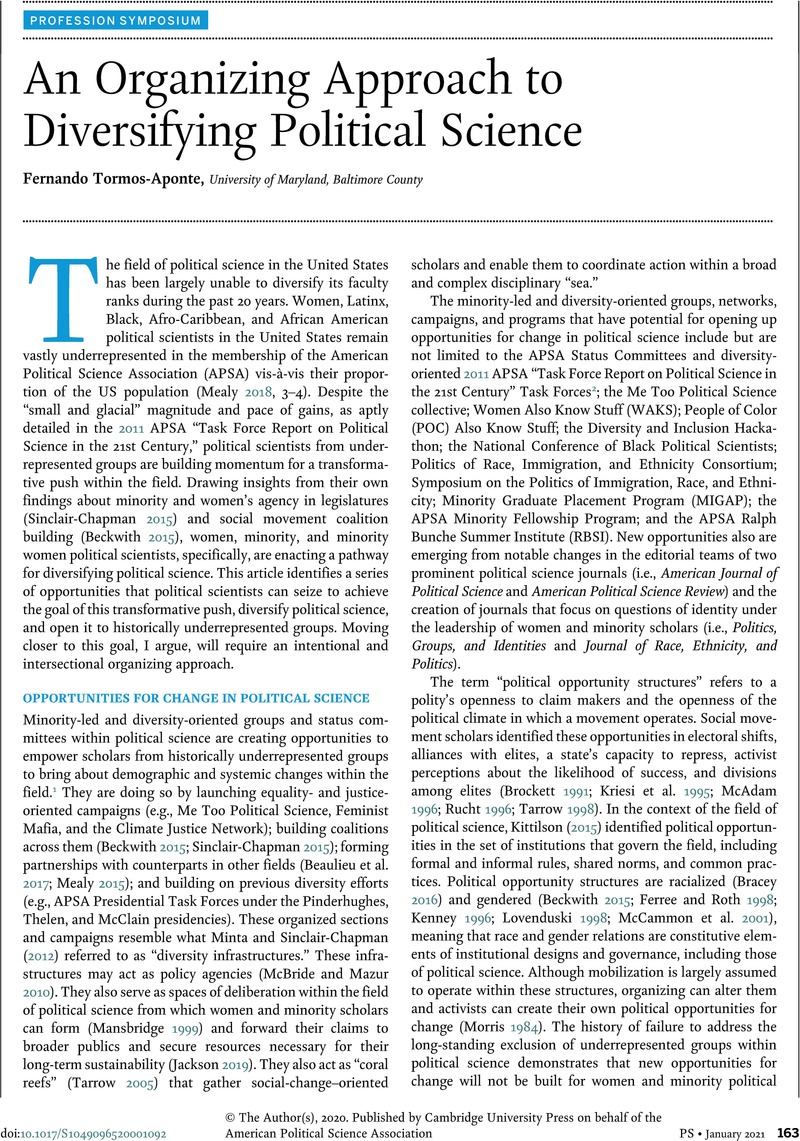Mealy, Kimberly A. 2015. “Forging Inclusive Diversity Coalitions within Associations.” Paper presented at the 2015 National Science Foundation Workshop on Coalition Building to Advance Diverse Leadership and Address Discrimination in Political Science and Law and Social Sciences. Arlington, VA, January 7–9.
Google Scholar 